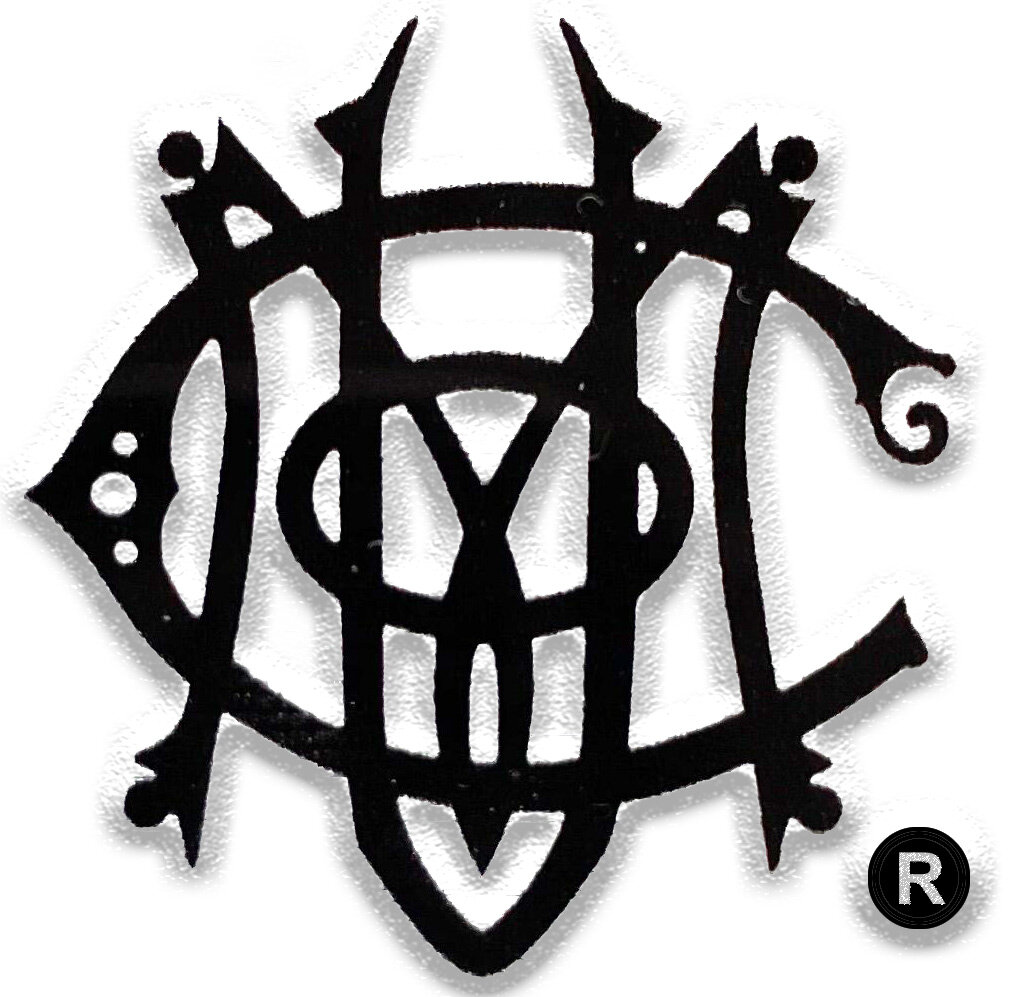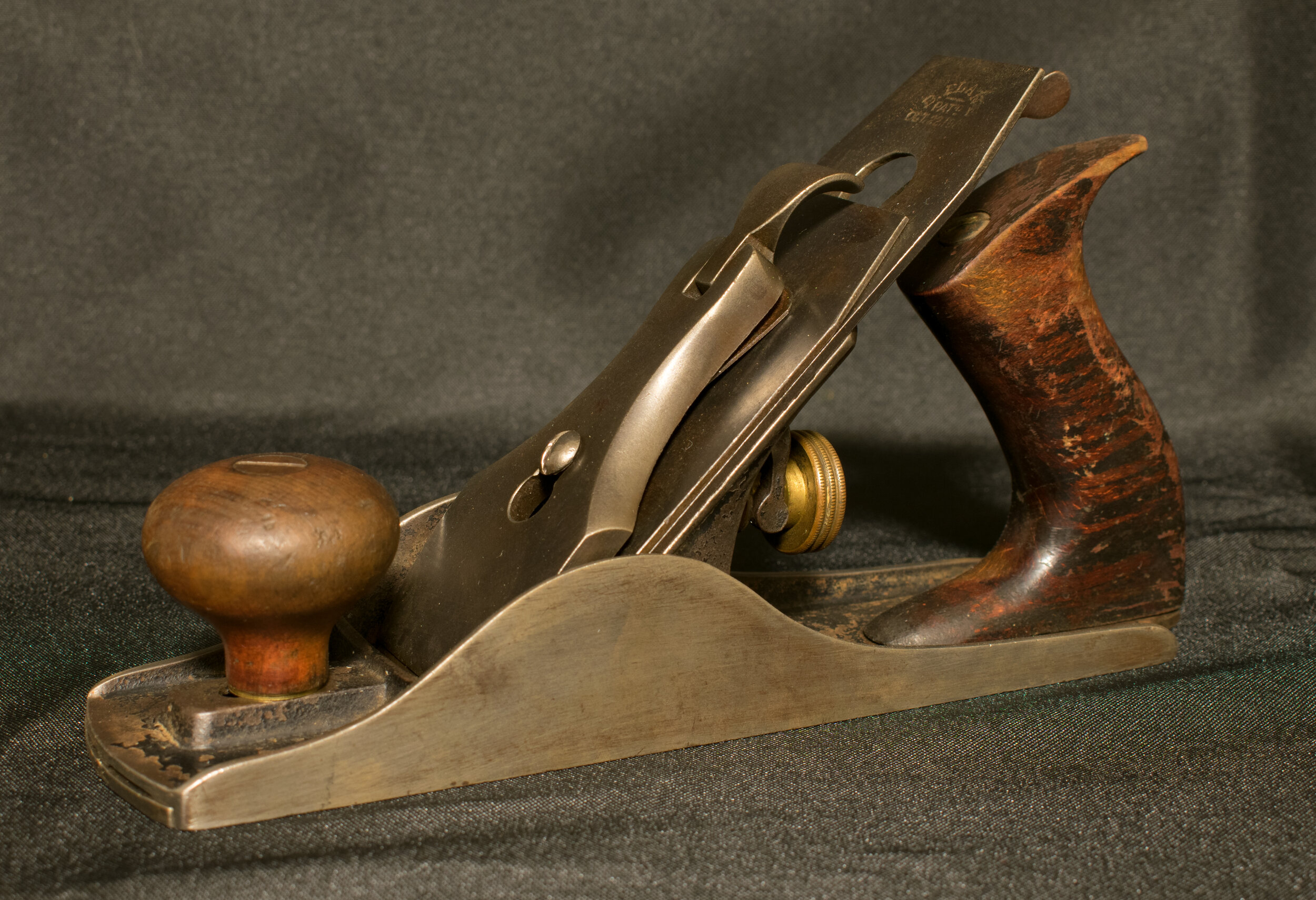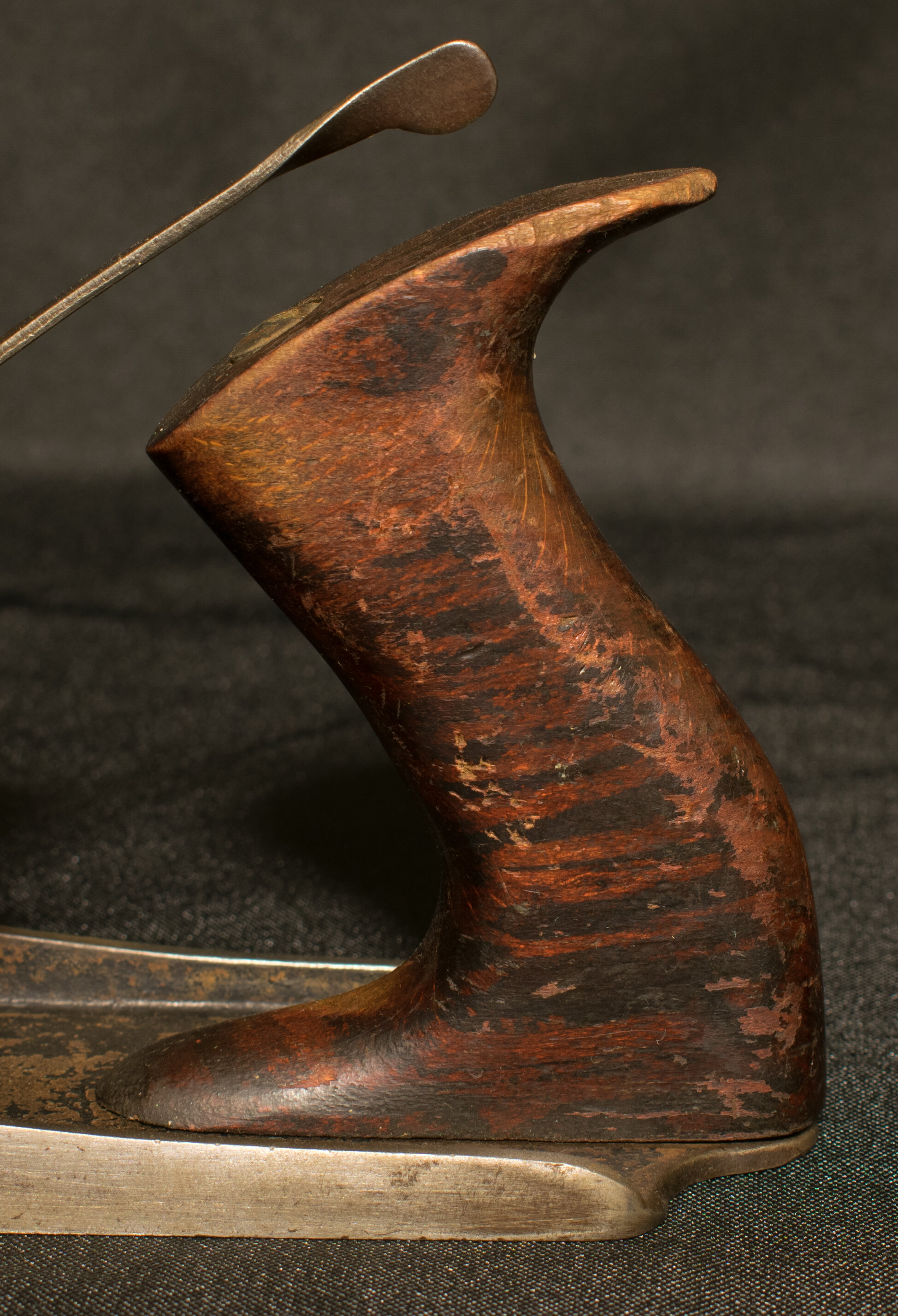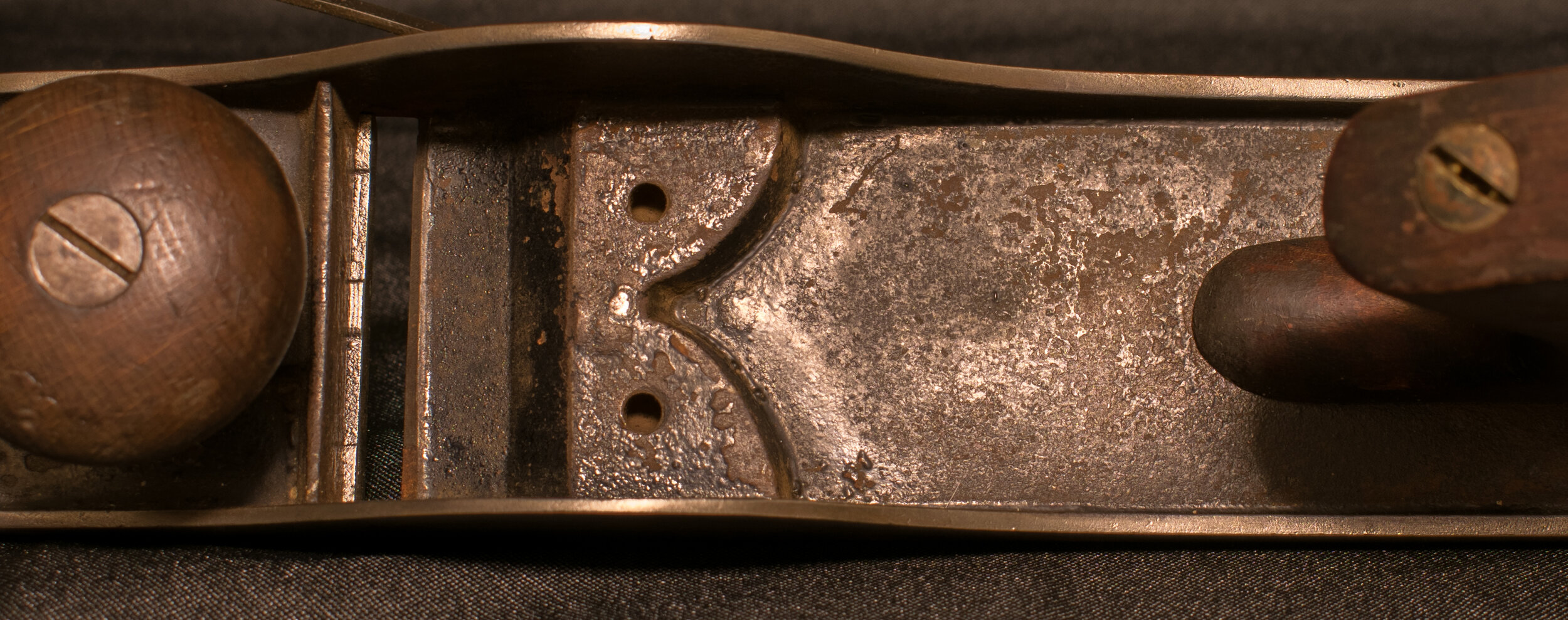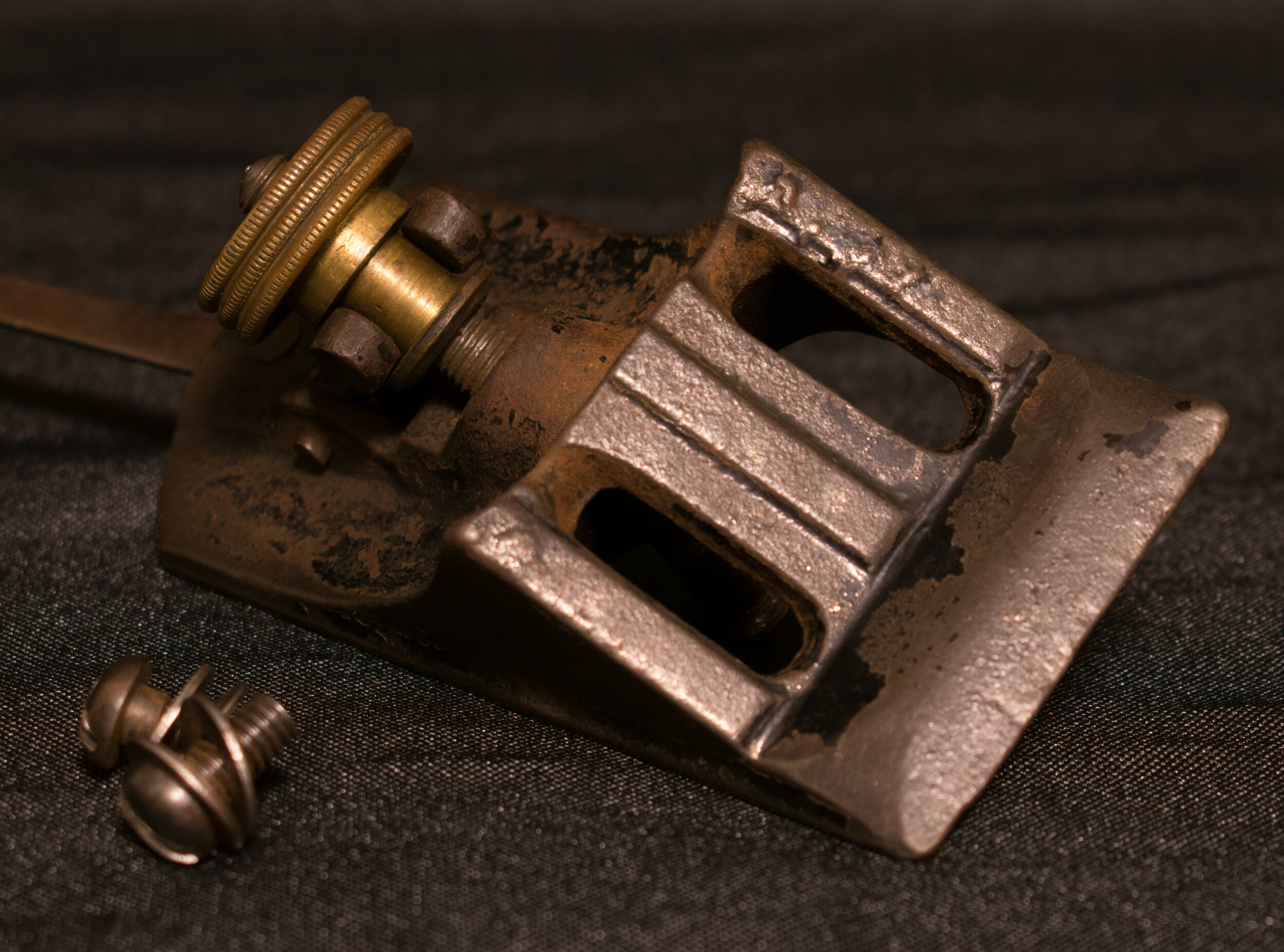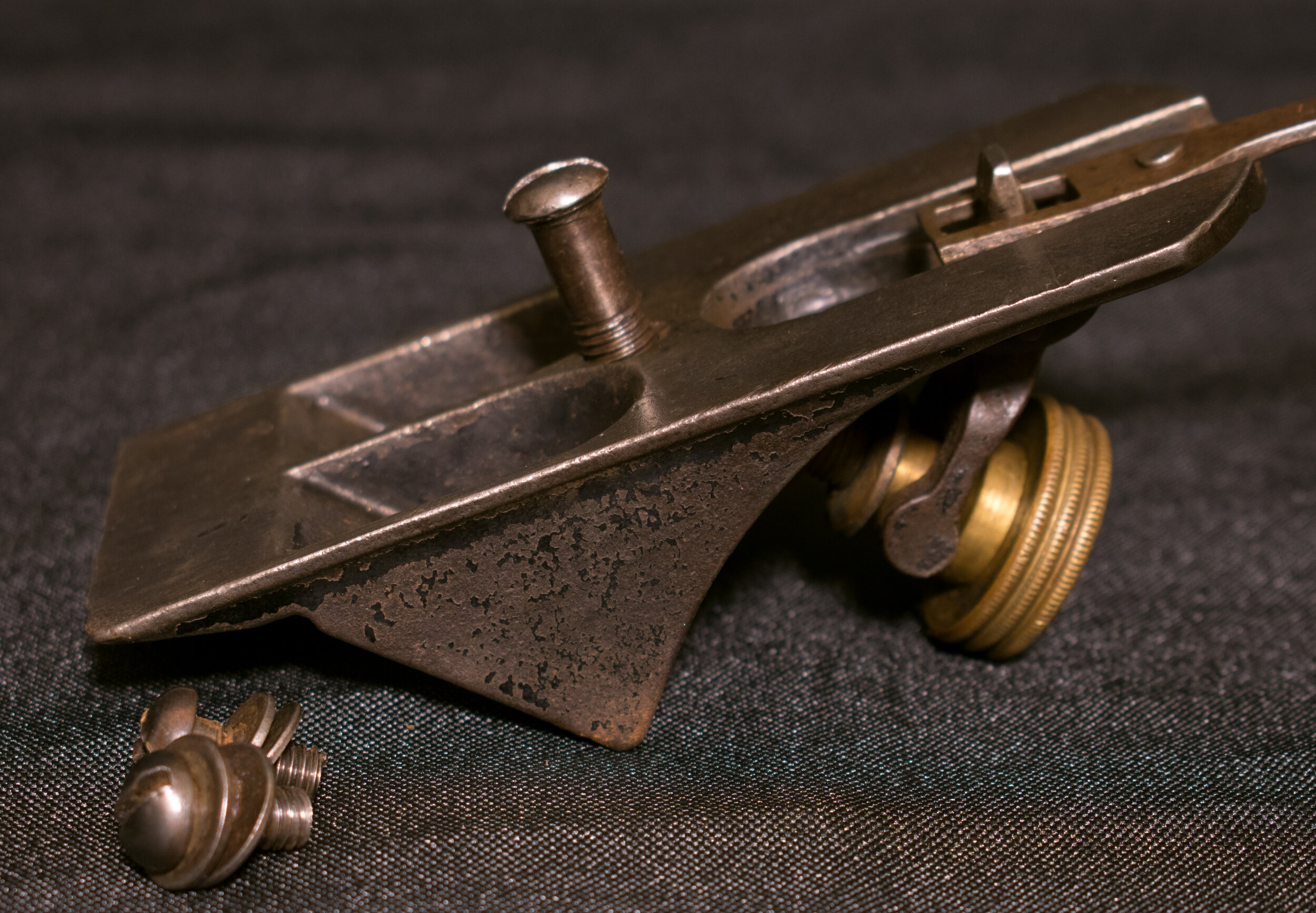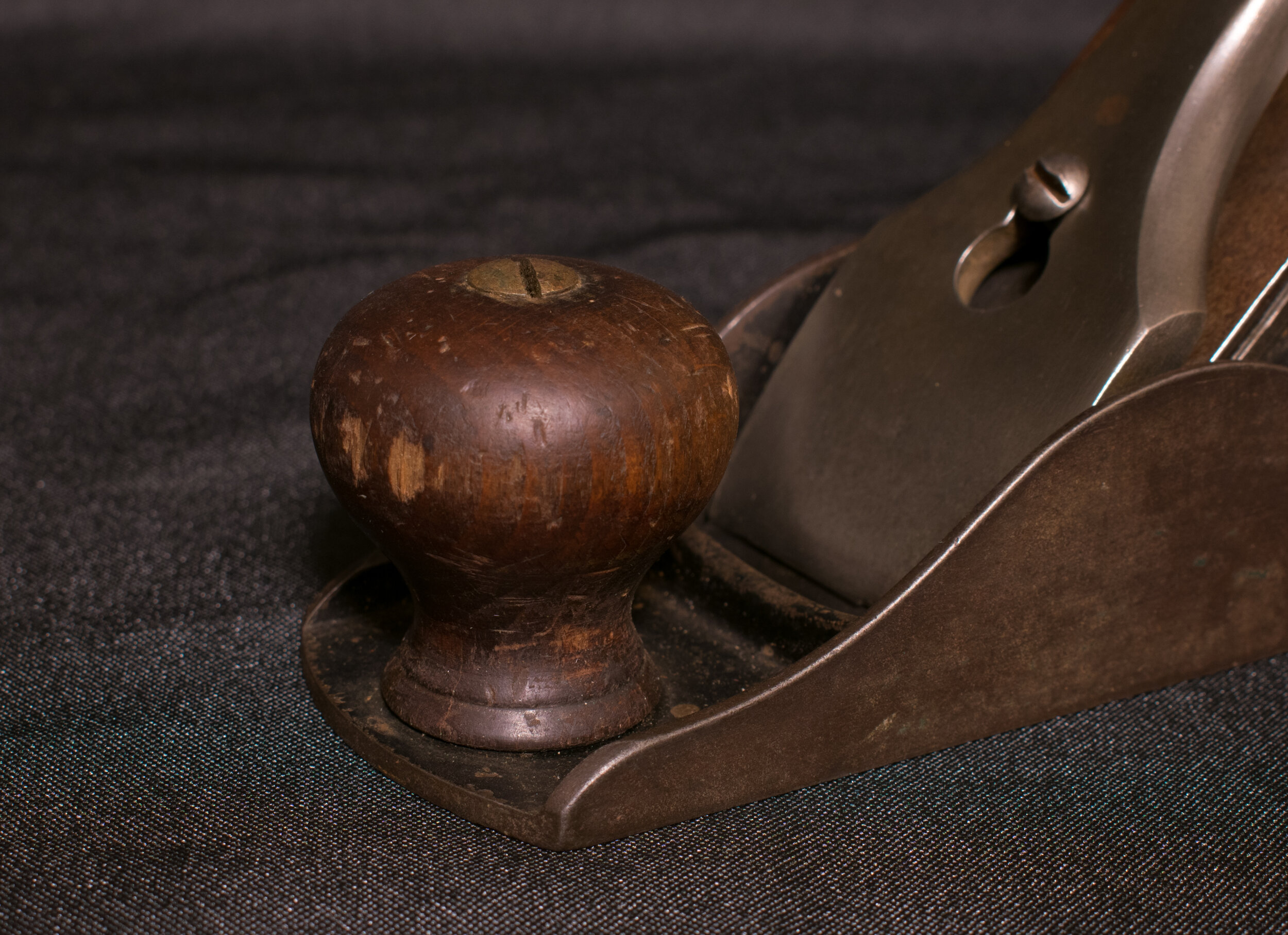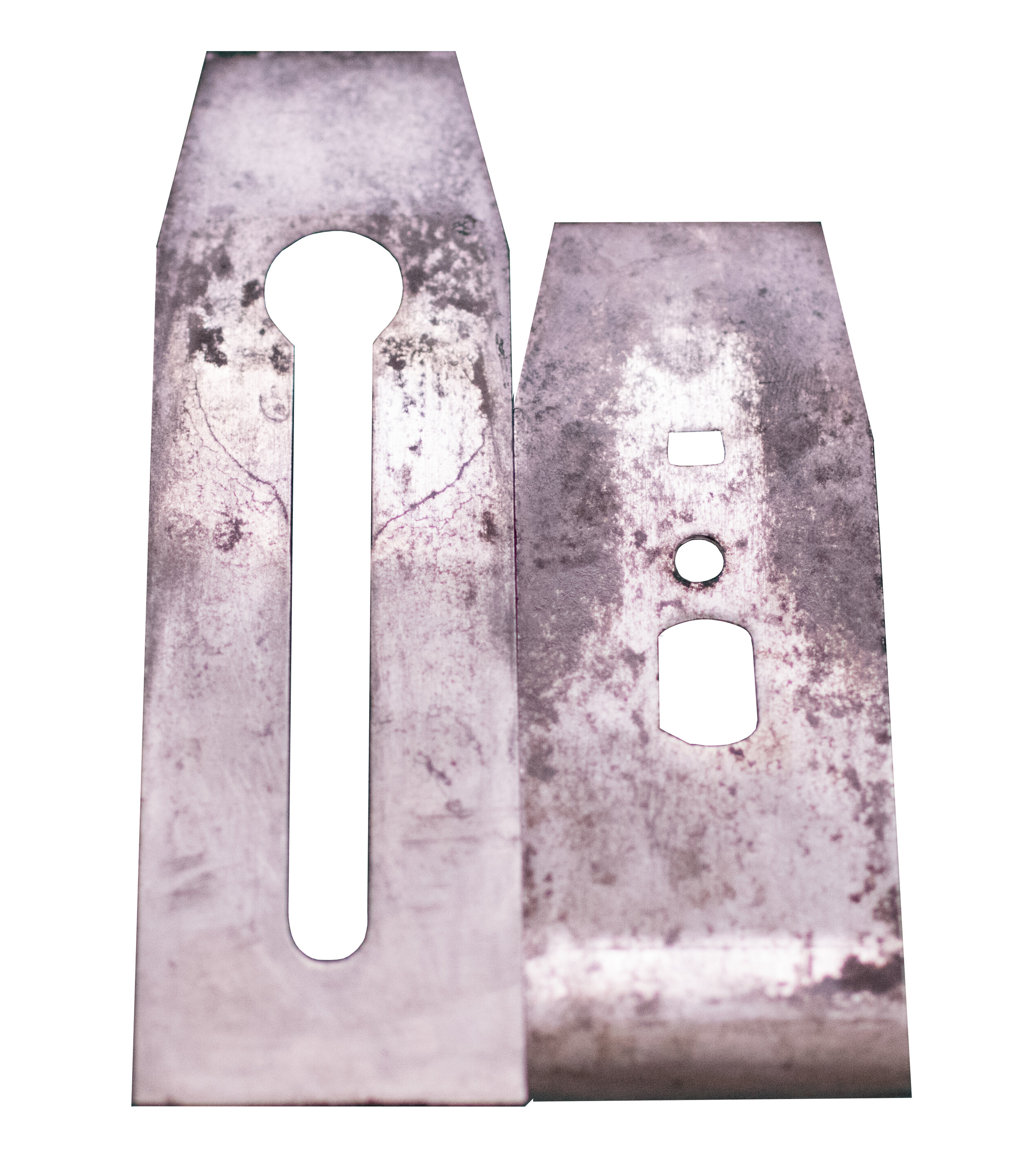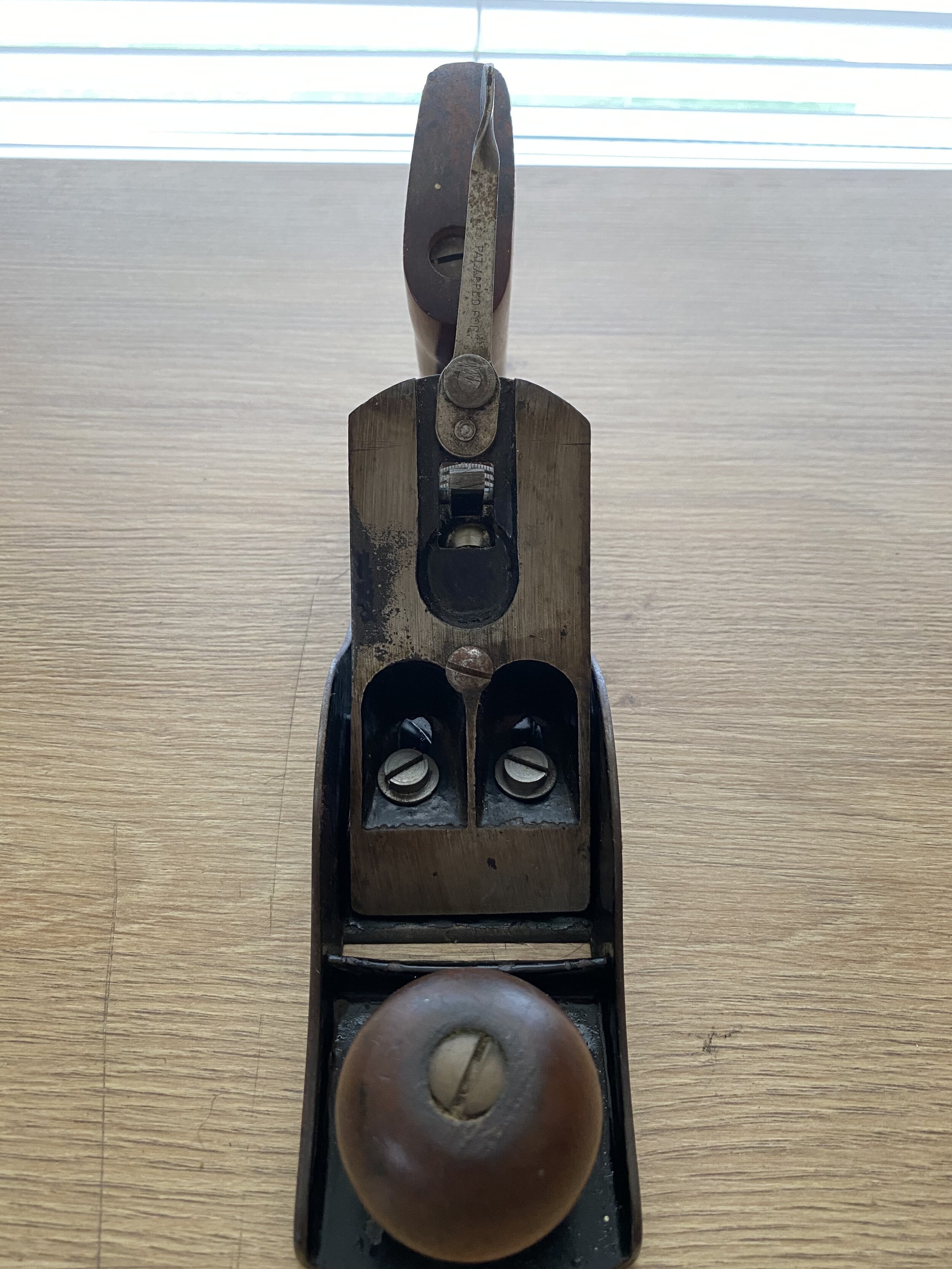Union Plane Feature Study Overview
This study is continually updated as new information comes to light.
Study Contents
Birmingham “B-Plane” (Union Type 0 / precursor)
So you’re likely asking yourself why would Birmingham Plane Company have anything to do with Union Mfg Co and further why would they be included in an in-depth study of Union’s Planes. While they were in fact two distinctly separate companies at one point on the surface, Birmingham would eventually be the driving force behind the board at Union’s decision to manufacture and sell hand planes, spokeshaves and other implements for the woodworking market. The influence will be readily apparent as we go further into the study, especially the first two types of Union’s Plane offerings.
Birmingham Plane Company was founded by George D. Mosher in November of 1885 in the area of present day Shelton, CT. George Mosher was issued various patents for his inventions (only one of those patents will matter to the Union Feature Study at hand). Birmingham Plane Company was renamed Derby Plane Mfg Co sometime during the year 1891. The name change is somewhat under debate as to exactly why, some have speculated financial hardship, while others have associated the geographical area name change to be the reason for the name change from Birmingham Plane Company to Derby Plane Manufacturing Company.
The Derby Plane Mfg Co. was purchased by Union Mfg. Co. sometime in the later 1890’s, with the latest possible date of 1900. This is where things get a little confusing and are up to some pretty heavy debate. It was always thought that Union purchased the Derby Plane Manufacturing Company in 1900, however Union was offering planes bearing the Union name identical to the B Plane including the patented Mosher “caged” lateral lever as early as 1898-99 through a wholesale distributor in Boston, Mass. So this could be summed up to a partnership which lead into a buyout or an earlier buyout than previously thought. It is thought that Union offered the B Plane products until stock was exhausted after the purchase of Derby. This theory is more than plausible and likely. Companies of this era wasted nothing as you’ll see repeated over and over throughout this study.
BIRMINGHAM Plane Features that pertain to Union Mfg Co Planes
(SEE TYPE 1 Feature Study for specifics on each detail)
Cheek Shape
Sole/ plane bottom shape/ bed
Tote, Knob Finish and Shape
Frog Seat Shape
Frog Shape and Detail
Chipbreaker & Iron Stamp Configuration
features of a type 1 Union Hand Plane
(1898-1902)
(These features cover the first bench plane Manufactured at Union Manufacturing Company Bearing the Union Name)
Type 1
Estimated value of a Type 1 is between $500-$1000 Depending on size and condition. With the No 4 and No 8 being on the higher side.
Union Manufacturing Company had been making planes since the 1880’s for others but it wasn’t until around 1898-99 planes were made bearing the Union Mfg Co Name. This type covers these particular planes.
The easiest way to identify a Union Type 1 plane is by knowing and understanding the features found on a Birmingham “B-Plane” the reason for this is the Type 1 is effectively the same plane with a few minor exceptions. In the previous Type there is a list of features that “pertain” to Union. We will go into specific detail on those particulars in a more in-depth way of identifying this rare plane. Using the term “rare” is quite the understatement as well. A true Type 1 Union Plane is one of the rarest finds in the old tool world.
Recent Update: TWO Union Type 1 No 8’s have been found both in MO!
(Below Features are based on the only Known Example of a Union Type 1 No 4) From the Collection of Paul Fisicaro
Cheek Shape
Type 1 Union Bench Planes are very different from the later Union production types in that they have a much lower cheek rail profile both in the front and rear. This is a feature commonly found on Birmingham B-Planes and is directly related to the acquisition of the Derby Plane Manufacturing Company B-Plane product line. This feature is not unique to a Type 1 however and shouldn’t be used as the sole basis for typing your bench plane. It is however a giveaway that the plane is an early Union example.
Early Union Manufacturing Company Side Profile (depicted from a Type 1 Union No 4 Smoothing Plane Circa 1898-1902)
Sole/ plane bottom shape
The sole of a type 1 Union is identical a Birmingham of the same size and are carried on well into later production. The Type 1 Union soles are identical in length and width as the Birmingham they are modeled after. The heel of the sole that supports the rear of the tote on the smallest planes is very narrow and long versus later more stubby production models on the No 2 and No 3 size Bench planes.
Early Union Manufacturing Company Sole Profile
Tote, Knob Finish and Shape
Yet another example of the Birmingham/ Derby B-Plane influence on the design of the Type 1 Union Bench Plane.
The hardwood knob is directly off of the earlier B-Plane and is identical in every way. These knobs resemble no other manufacturer and Unique to the B-Plane and Early Unions. With the hardwood knob being a smallish bulbous or ball shape and featuring a distinct single bead at the base, it is easily identified from a distance. It is also important to note that this knob is not unique to only the Type 1 and can be found on early Type 2 Bench Planes as well. (size reference is as opposed to the much larger later Union Knob)
The hardwood tote is also directly from the B-Plane and is very distinct in shape and profile. When looking directly from the back it would be very easy to mistake a Type 1 Union for a Birmingham/ Derby B-Plane. (the example depicted here was originally marketed by its seller a Birmingham) The tote features a very bulky profile with flat sides that are eased quite nicely into the front and back. The earliest Union totes have a long slender horn at the top of the tote found on very few other makers planes and are distinct enough to aid in identification.
The finish on the tote and knob are unique to only two makers that we are aware of and feature a Faux Rosewood hand-painted wood grain effect as can be seen in the below images. (For a link to the other makers information click here)
Union Type 1 / B-Plane Tote
Union Type 1 / B-Plane Knob
frog seat shape and bed
The frog seat shape on early Union’s are very distinctive and are shaped in a “Deep V”. The Type 1 has this feature, which was carried over from the Birmingham/ Derby B-Plane it was modeled after. While the Deep V alone is not an indicator the plane is a Type 1 when combined with the Lower Cheek Rails described earlier as well as the Sole Shape, it will help determine that the plane was very early in production.
It should be noted that the structure rib on smaller planes in front of the mouth opening is not straight across as would be found on later Union made planes. This is an important detail only found on the earlier Union made planes. (See Frog Face View pictured below for an example)
The Type 1 No 4 features a raised Union logo behind the frog directly on the bed surface (Note: No 2’s are on raised areas). The Union name is in an “Arched” configuration. This Raised casing is common amongst all Union planes until the very last few types.
Very Early Union Manufacturing Company No 4 Bed Detail
Frog shape and Detail
All Type 1 Union Planes carry over Birmingham features but the frog itself is a Birmingham frog. Features of the Birmingham frog include the single ribbed sides, the Mosher Patent “caged” style lateral adjuster and the lack of a milled groove at the front of the frog bottom where it meets the frog feet, this missing feature is common on the later Union frogs. This frog configuration is unique to the Birmingham and Type 1 Union planes only. The Type 1 frogs are secured to the frog seat with two round head or what is commonly referred to as a dome head screw and will have two washers. It is important to note that the double washer configuration is standard on a Type 1 and is found on both the No 4 pictured here as well as the No 2’s that have been found.
(See Union No 2 Sized Bench Plane Type Study Here) coming soon……..
Frog Face View
Frog Back and Bottom View
Frog Side Profile
Chipbreaker & Iron Stamp Configuration
The Type 1 Union No 4 chipbreaker is the same design that can be found on the later planes including the X Series Bench Planes and is not unique to a Type 1. The chipbreaker is constructed from a solid piece of sheet steel and features a slightly bent end that has been formed and tapered to meet the iron edge precisely. It is important to note there is not a bend mark or a “hump” as would be found on other makers planes, such as Stanley or Record.
The single most difficult thing to find for a Type 1 Union is the “ARCHED” logo Iron. These irons should be handled with great care and should be considered one of the rarest components of any Union made plane. It can not be stressed how lightly these irons are stamped with most examples being as hard to see the mark as a worn saw etch!
The iron features the Arched “Union” name over a “PAT” underscored by the patent date “OCT 22, 1889”, which refers to the George D. Mosher’s Patent number 413300. The patent refers to the caged lateral adjuster that was carried over from the B-Plane bench plane. This patent marked iron is not to be confused with the later X-Series Type 1 patent marked Iron.
(See X-Series Type Study Here) coming soon……..
Union Type 1 Arched Logo With George D. Mosher Patent Stamp
Example of a Union Mfg Co Iron and Chipbreaker
Type 1 Scarcity Guide and notes
Models offered during the Type 1 Era are based upon catalog records from 1898-1899 (the noted beginning of the Type 1 era). Models may have been added before the release of the Type 2 era bench planes, so it’s best practice to check your plane even if it’s listed as “Not Offered During Type 1” here in this guide. Note: Values stated are for reference only and all condition, relative scarcity and current demand at the time of sale should be taken into account. Values could be slightly higher or lower depending on the circumstances of the sale.
Union No. 0
As of this writing (zero) No. 0 Smoothing planes have been found from this era.
“Not Offered During Type 1”
If you have any information regarding this plane please contact rporter@unionmfgco.com
Union No. 2
$650-$750 Estimated Value (Assuming Condition as “Fine”)
As of this writing (five) No. 2 Smoothing planes have been found from this era.
The Type 1 No. 2 Union smoothing plane was the first Type 1 plane to be seen by the general public. (We have Pat Thomas to thank for that amazing discovery) Prior to seeing Pat’s beautiful example of a Type 1 No. 2 Type 1’s were considered to be a myth. Due to the attention it garnered when it was shared with the general public it caused others to take a closer look at their No. 2 Unions and as a result more have been found. As of the time this is being written all of the Type 1 No. 2’s have been found with the same features, with no variants.
If you have any information regarding this plane please contact rporter@unionmfgco.com
Union No. 3
Value Unknown at this time
As of this writing (zero) No. 3 Smoothing planes have been found from this era.
This plane is listed however until we are aware of an example being found we can not confirm their existence or if they were ever manufactured during the initial run of bench planes. Other types of this plane are fairly common so we’re hopeful a Type 1 example will surface soon for examination and study.
If you have any information regarding this plane please contact rporter@unionmfgco.com
Union No. 4
$500-$600 Estimated Value (Assuming Condition as “Fine”)
As of this writing (one) No. 4 Smoothing planes have been found from this era.
Only 1 of these scarce planes have been found as of this writing. The plane was found on eBay being listed as a Birmingham/ Derby Franken Plane. This misidentification seems to be a common thread for Type 1’s since they share two different manufacturers components. To the less informed it’s a franken plane however to the more informed (see above to add yourself to the more informed list!) its a rarely seen Type 1. It is encouraged for more to be found so further study can take place. There have to be more out there!
If you have any information regarding this plane please contact rporter@unionmfgco.com
Union No. 4-1/4
Value Unknown at this time
As of this writing (zero) No. 4-1/4 adjustable mouth Smoothing planes have been found from this era.
This plane is listed however until we are aware of an example being found we can not confirm their existence or if they were ever manufactured during the initial run of bench planes. A Union 4-1/4 is a very rare plane to start with so this plane would be an amazing find if one ever surfaces!
If you have any information regarding this plane please contact rporter@unionmfgco.com
Union No. 4-3/8
As of this writing (zero) No. 4-3/8 jumbo Smoothing planes have been found from this era.
“Not Offered During Type 1”
If you have any information regarding this plane please contact rporter@unionmfgco.com
Union No. 4-1/2
Value Unknown at this time
As of this writing (zero) No. 4-1/2 jumbo Smoothing planes have been found from this era.
This plane is listed however until we are aware of an example being found we can not confirm their existence or if they were ever manufactured during the initial run of bench planes. That being said Type 2’s have been found with an arched logo Type 1 Iron in this size. Union No. 4-1/2 planes are fairly common so we have high hopes a Type 1 will surface soon!
If you have any information regarding this plane please contact rporter@unionmfgco.com
Union No. 5
Value Unknown at this time
As of this writing (zero) No. 5 jack planes have been found from this era.
This plane is listed however until we are aware of an example being found we can not confirm their existence or if they were ever manufactured during the initial run of bench planes. Given the No. 5 is by a mile the most frequently found plane than any other in the Union lineup, you’d think a half a dozen Type 1’s would been found by now. However that is not the case. Type 2’s with a Type 1 Iron have been found so that leaves high hopes one of these planes will surface soon!
If you have any information regarding this plane please contact rporter@unionmfgco.com
Union No. 5A
As of this writing (zero) No. 5a jumbo jack planes have been found from this era.
“Not Offered During Type 1”
If you have any information regarding this plane please contact rporter@unionmfgco.com
Union No. 6
Value Unknown at this time
As of this writing (zero) No. 6 fore planes have been found from this era.
This plane is listed however until we are aware of an example being found we can not confirm their existence or if they were ever manufactured during the initial run of bench planes. Given the No. 6 is a VERY commonly found plane in the Union lineup, you’d think more Type 1’s would been found by now. We’re hopeful a few of these planes will come up to be examined for this study.
If you have any information regarding this plane please contact rporter@unionmfgco.com
Union No. 7
Value Unknown at this time
As of this writing (zero) No. 7 jointer planes have been found from this era.
This plane is listed however until we are aware of an example being found we can not confirm their existence or if they were ever manufactured during the initial run of bench planes. Union No. 7 Jointers aren’t the most common planes to be found but wouldn’t normally be considered rare or scarce, however the earlier ones have been slightly difficult to find. This plane may pose a bit of a challenge to be found as a Type 1. We have high hopes someone has one so we can study it.
If you have any information regarding this plane please contact rporter@unionmfgco.com
Union No. 8
$600-$800 Estimated Value (Assuming Condition as “Fine”)
As of this writing (two) No. 8 jointer planes have been found from this era.
Only two of these Union made planes have been found. One resides in the collection of Nick Trusty and the other resides here at Union Mfg Co in the permanent collection. These planes would typically be easy to find as any other type and were apparently very popular during Union’s plane making hayday. Given the fact that so many have been found of other types we’re hopeful more will surface. The two examples that have surfaced are a little different from each other. So two have been found as two variants of a Type 1.
If you have any information regarding this plane please contact rporter@unionmfgco.com
features of a type 2 Union Hand Plane
(1903-1904*)
(These features cover the second bench plane Manufactured at Union Manufacturing Company Bearing the Union Name)
Type 2
Estimated value of a Type 2 is between $35-$2000 Depending on size and condition. With the No 4-1/4 and No 4-3/8 being on the higher side.
The Type 2 bench planes were born out of the New X Plane line of premium bench planes however they carried over most of the features found in the much rarer Type 1 bench planes.
The easiest way to identify a Union Type 2 plane is by knowing the various changes and truly being able to identify the plane that came before it. Type twos are the basis for all Union bailey pattern planes to come until Stanley is contracted to do the finish work on Union cast planes (1907) and eventually buying the plane division altogether (1920-21).
Cheek Shape
The cheek profile on a Type 2 bench plane will be similar and even in some cases identical to a Type 1 bench plane. With this given example the cheek profile is only similar in that it is still very sleek in profile. The profile on the cheek rail is thinner at the toe and heel as is the Type 1 however it is not as low as a Type 1. That being said the Type 1 sole can be found on a Type 2 commonly. It is important to note the lower Type 1 style toe and heel will be found on the earlier produced Type 2’s while the later production Type 2’s will have the cheek profile depicted above.
Sole/ plane bottom shape
Same as Type 1
Tote, Knob Finish and Shape
Yet another example of the Birmingham/ Derby B-Plane influence on the design of another Type of Union Bench Plane.
The Mahogany is an exact shape of a B-Plane or Type 1 Union. These knobs resemble no other manufacturer and are Unique to the B-Plane and Early Unions. With the Mahogany knob being a smallish bulbous or ball shape and featuring a distinct single bead at the base, it is easily identified from a distance. These knobs are found on the Type 1 and Type 2 Union Bench Planes.
The Mahogany tote starts to vary little from its older sibling in that they don’t all have the Faux striping found on the Type 1. It has always been assumed that if your plane has the striping it was of earlier Type 2 origin if no striping at all its later Type 2. That is correct as far as the information found indicates. The earliest Union totes have a long slender horn at the top of the tote found on very few other makers planes and are distinct enough to aid in identification. This is another interesting area where the early Type 2 with have the very long slender horn and the later Type 2’s start heading towards the shape of a Type 3 tote which has a less obvious long horn.
All Type 2 Wood is red toned and they will typically show where the wood toning is worn off because it was surface applied and not impregnated like a stain.
frog seat shape and bed
This particular area of the plane is a match for its older sibling inside. It still has the Deep V frog seat and the thin cheek walls as a Type 1. The front support rib on the smaller planes doesn’t not go straight across and dips down in the middle like the Type 1 as well. The Type 2 No 4 features a raised Union logo behind the frog directly on the bed surface (Note: No 2’s are on raised areas). The Union name is in an “Arched” configuration. This Raised casing is common amongst all Union planes until the very last few types.
Frog shape and Detail
The frog on a Type 2 Union Bench Plane is exactly the same as a Type 1 with a few small changes. Note the side rib is still present, the frog bottom hasn’t received the signature slot milled yet, the lateral recessed area is wide open allowing the yoke to slide side to side like the Type 1. This area is open because the frog was designed to hold the Mosher Patent Lateral, which depended on the engagement part of the yoke to move the iron laterally.
The biggest change to note on the Type 2 frog is the change to the newly “Patent Applied For” lateral adjuster which is stamped clearly for all to see as “PAT. APPL’D FOR”. (This feature is not unique to the Type 2 and can be found on later bench Planes) Some of these lateral stamps are straight and some are arched.
A personal favorite in use. Right means right and left means left now! This lateral originates from our all time favorite premium planes! The Union X Plane! The lateral is clearly seen in the patent application and was meant to be included in the protection provided by the patent, it however didn’t make the cut and the patent never covered the lateral as genius as it was. Another thing to take note of, on the later Type 2’s such as the depicted example shown here you’ll notice the knurling is finer than the Type 1 which had a pretty coarse knurl from the factory floor. This feature however should not be used to solely disqualify it as a Type 2 because the coarse knurling can be found on examples well into the Type 3 period, which is further evidence these old New Britain Companies threw absolutely NOTHING away and used whatever was in the bin closest to the assembly table.
Iron Stamp
The makers mark stamp on any Type 2 Union plane is a very easy way to identify it apart from the other Types. A Type 2 will have a huge stamp, in some cases like the No. 2 and other small planes such as block planes, the stamp will look like its spilling off of the iron. These irons are referred to as “Big Letter” irons amongst Union Collectors. This feature is Unique to this era plane and is not found on any other Type.
Type 2 Scarcity Guide and notes
All Models were offered by the Type 2 Era and is to be considered one of the most prolific eras of the Union Manufacturing Company’s time making woodworking planes.
Type 2 Planes are NOT RARE by any means with exception of a few models (See Below) They are however highly sought after by Union Collectors because of their shape and they are more readily available than a Type 1.
Note: Values stated are for reference only and all condition, relative scarcity and current demand at the time of sale should be taken into account. Values could be slightly higher or lower depending on the circumstances of the sale.
Model No
Scarcity
Estimated Value
No. 0
No. 2
No. 3
No. 4
No. 4-1/4
No. 4-3/8
No. 4-1/2
No. 5
No. 5A
No. 6
No. 7
No. 8
Ultra RARE
Fairly Common
Common
extremely common
Very Rare
Very Rare
Common
Extremely Common
fairly common
extremely common
uncommon
Common
$2000+
$160
$50-$60
$40-$50
$400-$500
$300-$400
$60-$75
$25-$40
$75-$100
$50-$65
$125-$175
$125-$150
Type 3, Type 4 & Type 5
Coming Soon! Stay Tuned!
Always Evolving
As with any Type Study the information given above is to be used only as a guide and variants are commonly uncovered every year by collectors. We welcome any new information that surfaces. If the new information meets our criteria to be considered it will be added to the Study to keep it up to date as much as possible. For consideration please contact us below.
